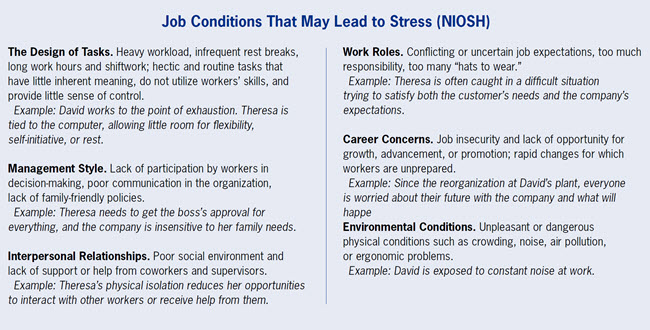
We all have stress. The stress response is how our brain and body work together to overcome a challenge. This could be the routine stress of getting home from work, getting your kids to sports, and making dinner within a specific timeframe. It could be more sudden like an illness or loss of a friend or family member. Or it could be traumatic like an act of war, an assault or a natural disaster.
Sometimes we feel stress after we’ve had an argument or when we have a deadline. However, once the argument is resolved or the deadline has passed, we should feel relief. Humans are wired to solve problems or difficult situations.
What happens if the stress is constant? This is “chronic stress,” a consistent sense of feeling pressured and overwhelmed during a long period of time.
According to the National Institute of Mental Health, “Because the source of long-term stress is more constant than acute stress, the body never receives a clear signal to return to normal functioning. With chronic stress, those same lifesaving reactions in the body can disturb the immune, digestive, cardiovascular, sleep, and reproductive systems. Some people may experience mainly digestive symptoms, while others may have headaches, sleeplessness, sadness, anger, or irritability.”
Coping with Workplace Stress
Just as we have home-life stressors, we can have workplace stress. Some stress pushes employees to grow and learn – and advance job performance. However, if the stress is excessive, it can significantly affect employees’ health. And this impacts your workers’ compensation program and costs.
According to the World Health Organization, work-related stress is the response employees may have when work demands and pressures are not matched to their knowledge and abilities, challenging their ability to cope. Consider if work-related stress risk factors identified by the National Institute for Occupational Safety & Health (NIOSH) exist in your organization (see sidebar below).

What Can Employers Do?
No simple solution or process will fit every organization. According to NIOSH, use a three-step process to guide the stress-prevention process:
- Problem Identification
- Intervention
- Evaluation
Problem Identification – Does a problem exist among your workforce? Typical signs of job stress include turnover, poor morale, and employee health and/or job-related complaints. A conversation between management and employees can sometimes uncover the issues. Consider using more structured tools to gather data, such as PMA’s Organizational Safety Perception Survey. Survey data can be combined with other measures (turnover rates, absenteeism, incident rates, etc.) and analyzed to determine problem locations/departments/conditions, etc.
Intervention – Once you understand the problem(s), determine how to intervene to drive change. It may be as simple as employee group discussions to find solutions. Or it may require complete organizational change. If an employee’s job stress outdistances their peers, consider helping them with strategies such as employee assistance programs and stress management training. Inform and update employees on all available interventions.
Evaluation – Assess both your short- and long-term results. Revisit the data collected in step one. Assess if measurable, lasting improvement occurred. NIOSH reminds us that “employee perceptions are usually the most sensitive measure of stressful working conditions and often provide the first indication of intervention effectiveness.”
Employee Health and Well-being Strategic Services from PMA Risk Control
Our services link strategies with workers’ compensation claim outcomes. Our customized solutions go beyond controlling physical hazards. We help clients establish workplace health metrics shown to impact an organization’s results (e.g., comorbidities and psychosocial risk factors) and develop solutions. Learn more.



